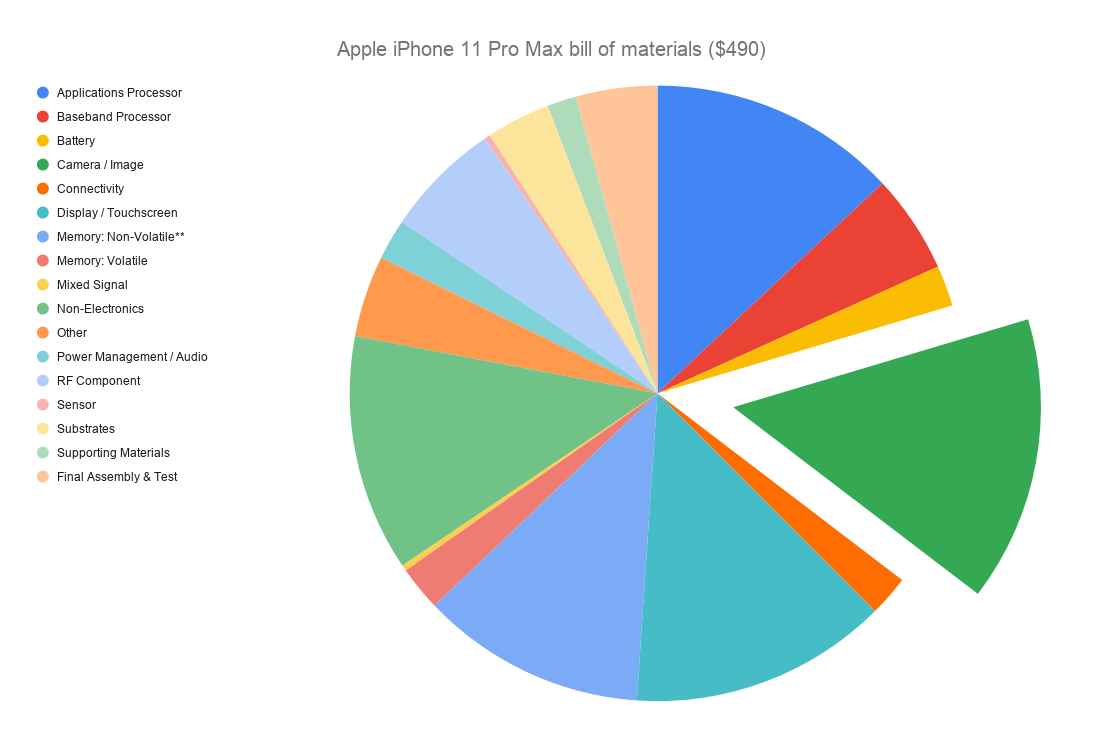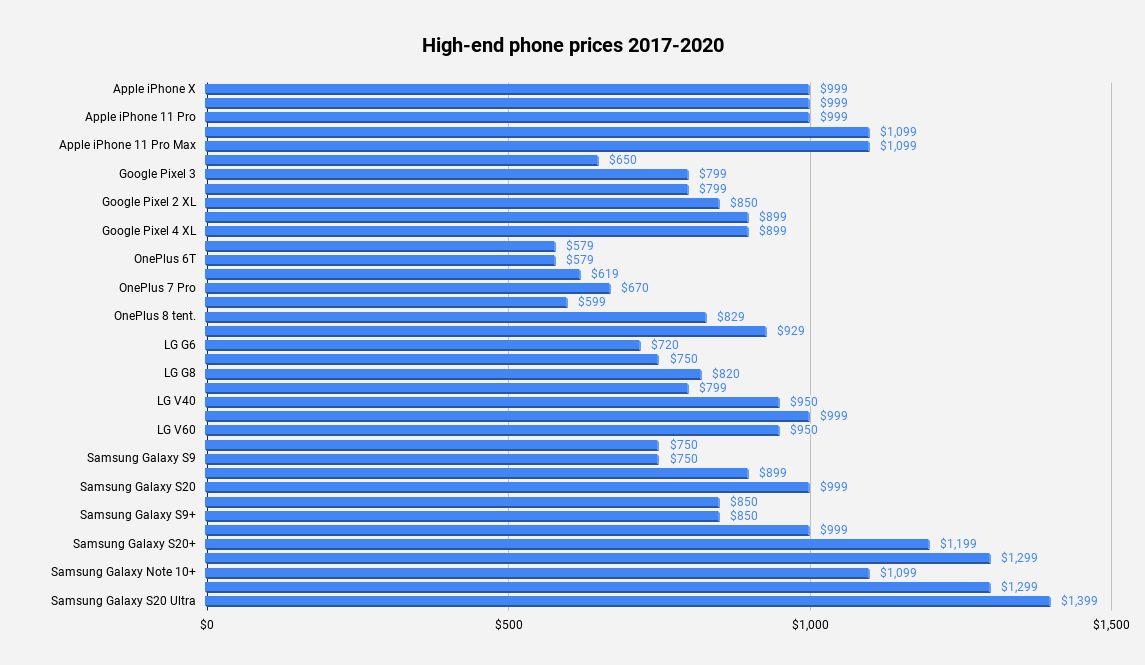Why are modern phones so expensive?

- iPhone 13: Release date, price, specs and leaks
Chinese phone companies, previously associated with value-for-money propositions only, are now offering more value for more money, and encroaching on the Apple or Samsung turf when it comes to pricing, too. Just consider the $999 middle Pro child of Huawei's new P40 series, or the $1200 Oppo Find X2 Pro. Heck, even OnePlus is preparing to unleash a thousand-dollar phone with the upcoming 8 series.
Phone prices are going up again, but why?
Granted, all these phones comes with the latest chipset, display and camera innovations, and one of the reasons for the ever-rising prices is the ever-rising tide of component costs as well, as per the recent interviews of two large phone makers' CEOs.

The bill of materials for older phones averaged around $200, now, it's grown more than twice
Nobody makes do with a front and a rear camera any more, and some like the P40 Pro are now up to seven sensors in total. Add the expensive periscope zoom with folded lens optics, the high refresh rate displays, and the ultrafast charging, and phones cost way more to assemble now than they did just two years ago.

The bill of materials for the iPhone 11 Pro Max is estimated to be nearly $500
First to shed a light on the matter was Huawei's CEO Richard Yu, who we sat down for a presser with last week, and witnessed calling the $999 for the P40 Pro "competitive" pricing, citing the increase in camera part costs alone. So, how much can the camera kit be if you are buying in bulk? Well, how about more than $100, tips Mr Yu when asked by Wired how much longer will phone makers be able to innovate on the camera front:
I think for at least the next one or two years. To be honest, it’s also very expensive. We spend a huge amount of money on that, we invest a lot. The spend on the [P40] camera is $100 [per phone], maybe even more than $100. That’s too expensive to be honest. The material cost is too high.
For the next two years, the camera is very important, but after those two years we won’t stop. But I think it’s not just the camera but also the more time the consumer spends with the phone, they need longer battery life, larger screens and more protection for your eyes. But if you have a larger screen and you want to fit it in your pocket and your hand, then you need a foldable phone or VR...
For the next two years, the camera is very important, but after those two years we won’t stop. But I think it’s not just the camera but also the more time the consumer spends with the phone, they need longer battery life, larger screens and more protection for your eyes. But if you have a larger screen and you want to fit it in your pocket and your hand, then you need a foldable phone or VR...
The cost in that category is very high; we are losing money. The costs are so intensive, you cannot believe it, you cannot make a profit. But the market demand [for the Mate Xs] is huge. We are continuing to increase our manufacturing to increase the volume of shipments.
If you don't believe Richard Yu, another CEO, Pete Lau from OnePlus, is sayihng basically the same thing in a sitdown with Business Insider, commenting on the price of the new OnePlus 8 series whose 5G models may border on a grand.
Prices across the supply chain, from raw materials to 5G chips, are all rising...
While OnePlus phone have never been camera kings, his pain is with the 5G connectivity that "poses many more technical challenges compared to 4G." You have to stuff way more antennas and filters, and deploy them strategically around the phone, especially if you want signal to pass through on Verizon's mmWave network, and the OnePlus 8 5G is rumored to land on Big Red for the first time.
Fitting all this in a phone with decent size and weight "very challenging in terms of design and configuration," according to Mr Laualso said, and he continues with the telling "prices across the supply chain, from raw materials to 5G chips, are all rising generally in the industry."
Fitting all this in a phone with decent size and weight "very challenging in terms of design and configuration," according to Mr Laualso said, and he continues with the telling "prices across the supply chain, from raw materials to 5G chips, are all rising generally in the industry."

Phone prices have skyrocketed recently
Even Apple is not immune from lower margins. Gone are the days when it made the iPhone 6 for $200 and sold it for triple that, as the camera component was just $12. Now the iPhone 11 Pro Max costs about $490 to make, and starts from $1099, with users keeping their phones for three instead of two years. The most expensive 11 Pro Max component? You guessed it, not the screen, as usually before, but the $74 triple camera kit.
When will this upward trend of high-end phone pricing and feature competition come to an end? Well, Pete Lau estimates that, after the initial brouhaha around 5G passes, and manufacturers have managed to master the multi-lens and multi-antenna designs, the costs will come down.
"The price of 4G devices went down somewhat over time … we anticipate a similar trend with 5G," Mr Lau says, and we can't wait for that moment to come, given that we are well on our way to the $1500 phone at the top end.










Things that are NOT allowed: